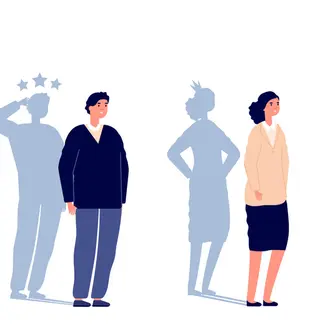Credit: Krisztina Papp on Unsplash
Economy
How should governors reopen their post-pandemic economies? New research from MIT Sloan weighs the tradeoffs entailed in reopening businesses, schools, and public spaces
Banks should be reopened first, while cafes and gyms should come much later; places of worship should be opened after colleges and universities, according to the analysis
Cambridge, Mass., May 7, 2020— As governors and local policymakers wrestle with how to stage the reopening of their states’ economies in the shadow of the deadly COVID-19 pandemic, questions abound. Which businesses pose the greatest risks to human health? Which ones pose the least? Which are the most essential to the economy and social wellbeing? Which locations should reopen first—and which should be last?
A new working paper from the MIT Sloan School of Management provides answers. Using location data from a large sample of smartphones, nationally representative consumer preference surveys, and government statistics, the paper analyzes the tradeoffs between the transmission risk of the coronavirus, the illness that causes COVID-19, and the social and economic benefits of reopening different kinds of businesses, schools, and public spaces.
The paper’s research team—Seth G. Benzell, a postdoctoral associate at the MIT Initiative on the Digital Economy; Avinash Collis, a doctoral candidate in Information Technologies at the MIT Sloan School of Management; and Christos Nicolaides, a digital fellow at the MIT Initiative on the Digital Economy—offers suggestions to policymakers on how to prioritize the phased reopening of their states’ economies in a way that minimizes risks to public health and maximizes economic wellbeing.
“Across the country, state leaders are making decisions in the dark about which types of businesses and locations can reopen and which ones should be kept closed to prevent the spread of COVID-19,” says Collis. “But in the fight against this pandemic, intuition alone isn’t good enough. Our research offers empirical evidence about the relative dangers and advantages of reopening stores and gathering places, to help governors and state officials reach decisions.”
According to their analysis, banks, other financial institutions, and general merchandise stores, such as Walmart and Target, should be among the first businesses to reopen. These locations provide lots of economic and social value and typically have large spaces that limit crowding, say the researchers.
The next phase of reopening should include colleges and universities, places of worship, auto dealers and repair shops, and other stores, which offer a balanced tradeoff of risks and benefits, according to the research. Within shops, electronics and furniture stores should be reopened before sporting goods and liquor and tobacco stores.
Meanwhile, gyms, cafes, juice bars, and dessert shops should be among the last businesses to reopen. These locations offer very limited economic benefit compared to their risks.
To identify the tradeoffs involved in opening different places, the researchers first needed to understand each location’s potential health risks and its importance to consumers and the economy. To measure importance, they investigated how much consumers value being able to have access to the location, its levels of employment, the size of its payrolls, and the amount of revenue it collects.
They also constructed a measure of “cumulative danger”—in other words, the overall risk—of spreading or catching Covid-19 in 26 categories of places. To do so, they harnessed cellphone data to track the number of visits the business receives, the number of unique visitors it gets, the person-hours of attendance at different levels of crowdedness, and the median distance traveled to the destination, which provides an indication of how much geographic mixing takes place. The researchers investigated these same danger measures for the general population and for people age 65 and older, who are at higher risk for severe illness.
“The most reassuring part of our research came when we compared our ranking of location types against the locations that have seen the largest decreases in visitations after weeks of nationwide lockdowns,” says Benzell. “The places we deemed to offer the worst tradeoffs—for instance, gyms and bookstores—have generally seen the largest reductions in visits and vice versa. This confirmed for us that people are viewing the problem broadly in the same way we are.
“That said, our rankings don’t line up perfectly with these reductions in visitation. Two of the largest outliers are liquor and tobacco stores, which do not have great economic or social importance, and tend to be small and highly trafficked shops, and universities and colleges, which have great economic and social importance, and often have large, open-air campuses with a consistent population of visitors. However, the number of visits to colleges and universities has decreased by over six times as much, in percentage terms, than visits to liquor and tobacco stores (over 60% versus less than 10%). This is in part due to decisions made by leaders about which types of locations are allowed to remain open. States should take a second look at how they’ve treated these outlier categories, while keeping in mind our study’s limitations.”
Last month, the researchers shared their findings with teams advising New York Gov. Andrew Cuomo about the state’s phased reopening plans, as well as with leaders in other states.
“The fact is, tradeoffs are inevitable and reopening businesses will expose people to the virus,” says Nicolaides, who is also an assistant professor at the University of Cyprus. “Our research provides a data-driven framework for weighing risks against rewards. We hope that policymakers are able to combine the results of our study with their own intuition and expertise to make better informed decisions.”
About the MIT Sloan School of Management
The MIT Sloan School of Management is where smart, independent leaders come together to solve problems, create new organizations, and improve the world. Learn more at http://mitsloan.mit.edu/.



